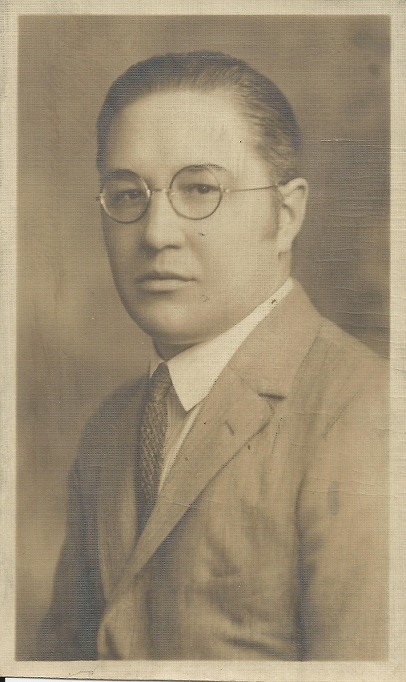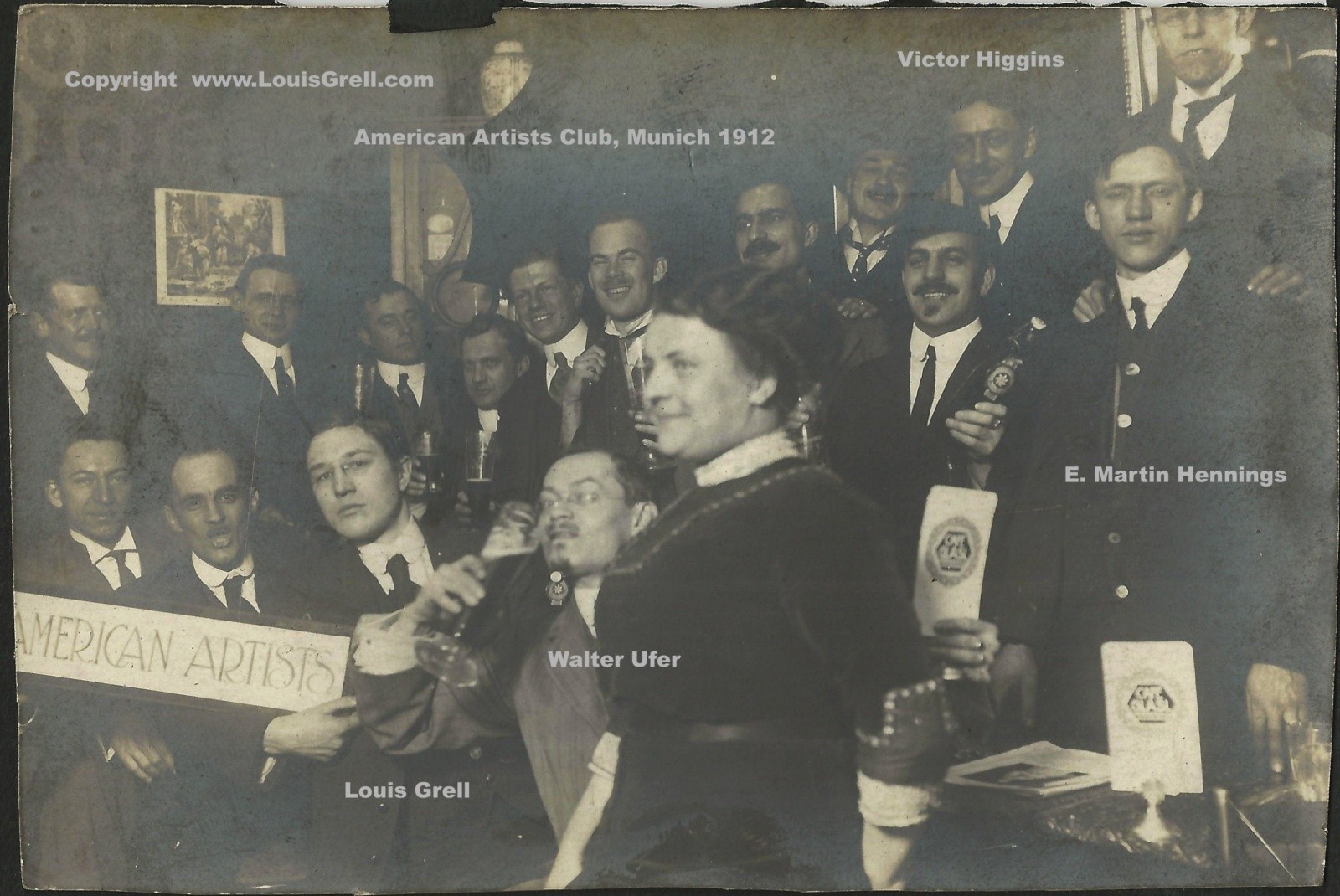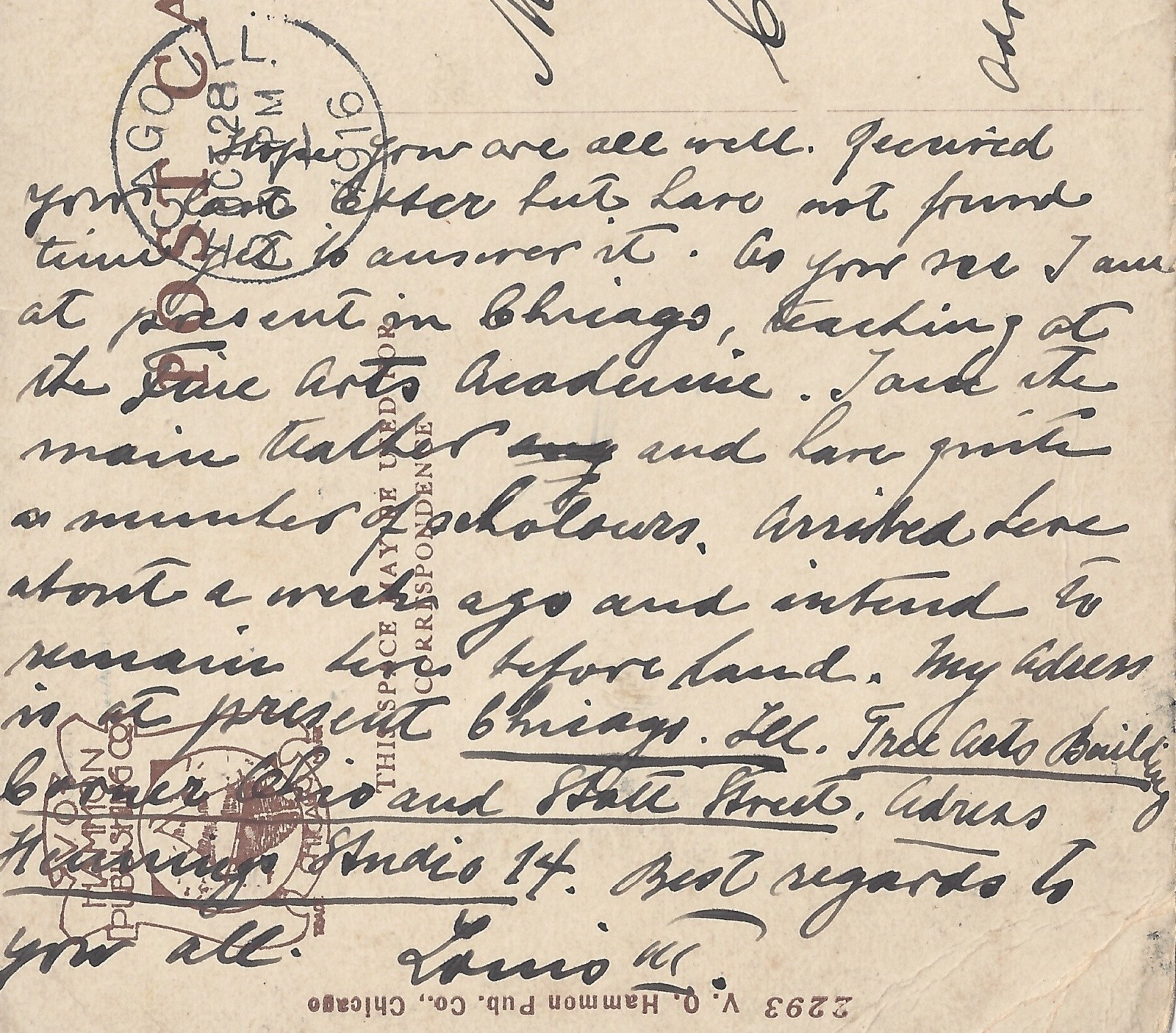About Louis Grell
Watch the Louis Frederick Grell video here
Biography
Why is there so much tragedy and fascination with the afterlife in many of Grell’s works? Why the desperate search for Mans Destiny, the planting of a new tree in Eventide while one dies in the background or the dead and dying trees placed so prominently in the foregrounds of many of his landscapes? By the time he was twenty-two years old he had lost a younger sister and his mother. His generation went through two world wars, the dust bowl, the Great Depression, Prohibition, Chicago gang violence and life-changing inventions such as the automobile and electricity. Today this seems impossible to understand. Then imagine, thousands of grand movie palaces popping up all around the country in a span of ten or so years and you just spent sixteen years studying art in Europe. If you were a young and gifted artist during times like these, what would you create?
Louis Frederick Grell III was born in Council Bluffs, Iowa on November 30, 1887 to meat market owner Louis Frederick Grell II, and Magdalena (Getz) Grell. Grell displayed a great deal of talent as early as two years old. Soon after, by the age of eight, Grell was drawing detailed sketches and paintings (Sailing Vessels, Jan. 1896) convincing his parents to send him, at the age of twelve, in May 1900, to Hamburg to live with his Grandmother and attend Europe’s finest art institutions.
Grell studied art primarily in Hamburg and Munich from 1900-1915. From 1905-1907 he attended the School of Applied Arts in Hamburg. From 1908-1910, Grell attended the Royal Academy of Fine Arts in Munich and the University of Munich under such esteemed professors as Franz von Stuck, Professor Switz, Carl von Marr and Angelo Jank. From 1913-1916, Grell taught, painted and traveled Europe exhibiting his artworks.
After America joined World War I, Grell returned to the US and began designing stage sets for large productions on Broadway in New York City from May to September 1916.
In September 1916, when Carl N. Werntz, Chicago Academy of Fine Arts founder and world traveller had an opening, Grell was immediately recruited to become Art Instructor at the oldest and most prestigious art academy in the US at the time. There, in 1917 and 1918, Grell would influence an unknown and very young art student by the name of Walt Disney. The young and gifted Disney attended McKinley High School during the day and then devoted a great deal of time at night learning how to draw at the Chicago Academy of Fine Arts.
In Chicago, Grell, who for the most part, did not believe that exhibitions and awards were necessary to advance his career, won the coveted Harry Frank prize for figure composition at the Art Institute of Chicago (AIC) in 1930 with his large painting Destiny. In 1936, he won the Municipal Art League prize for portraiture with Portrait of the Painter, Moessel which is held in the permanent collection at the Municipal Museum in Munich. The sitter for the painting, Julius Moessel (1871 – 1957) was a German born muralist, painter and very close friend of Grell’s who also moved to the Chicago area from Germany.
Louis Grell is currently represented in the following ‘known’ collections and locations:
Munich Municipal Museum, Brauer Museum at University of Valparaiso, American Museum of Western Art-The Anschutz Collection (Denver, CO), Pottawattamie County Government complex – lobby (Council Bluffs, IA 2012 – 2017), St. Louis Union Station Grand Hall, Council Bluffs Public Library (Council Bluffs, IA), Kettering University (Flint, MI), St. John’s Lutheran Church (Council Bluffs, IA), Chicago Theatre, St. Mark’s Episcopal Church (Geneva, IL), Netherland Plaza Hotel (Cincinnati, OH), City of Detroit Water Board Building, Lift For Life Academy (St. Louis, MO), Mayflower Hotel – East room (Washington D.C.), Palace Theatre (Greensburg, PA), St. John’s Northwestern Military Academy (Delafield, WI), Youngstown Metropolitan Housing Authority (Youngstown, OH), Bluffs Arts Council (Council Bluffs, IA), Amtrak Station Springfield, IL, Town Hall (Springville, NY), Town Hall (Persia, NY), Peoples Church (Chicago, IL), Assumption Catholic Church (Chicago), Notre Dame de Chicago, Ascension Greek Orthodox Church (Chicago), St. Marks Episcopal Church (Geneva, IL), First Presbyterian Church (Bay City, MI), M Christine Schwartz collection(Chicago) and many private collections with still many more to be discovered.
Early Years
Grell was born in Council Bluffs, Iowa on November 30, 1887, son of Louis Frederick Grell II, a meat market owner and Magdalena Getz who was artistic in fashion design. By the age of eight, Grell was painting better than his Council Bluffs art teacher Mrs. Bell Brown prompting a family meeting to decide the young lads future. After both parents realized that young Master Grell had a serious gift in drawing and artistic design, they decided to send him to the finest art schools in Europe. At the age of twelve, in May 1900, young Grell was escorted by Mr. and Mrs. W. B. Muesser, of Lewis Township, Iowa to his grandmothers home in Hamburg, Germany. There he would embarked on a fascinating journey through the highest levels of art training and craftsmanship which Europe had to offer. His first stop on the way to Hamburg was the Paris exposition of that year.
Europe Art Training
Grell first attended the School of Applied Arts in Hamburg from 1905-1907, then the Royal Academy of Fine Arts in Munich under Franz von Stuck from 1908-1910 and the University of Munich under Karl von Marr and Angelo Jank.
While at the School of Applied Arts, Grell and Professor Switz earned a large painting commissions in the Hamburg Boathouse, Hamburg Music Hall and at the palatial home of one of Germany’s wealthiest men nicknamed, “Budge, the Turpentine King.” For this grand home Professor Switz and student Grell only 15-17 years old, painted numerous large murals for the grand vestibule entering the mans home. Several of Grell’s artworks were chosen to be exhibited in Dresden during this time (Omaha World Herald, 2 June 1907 p. M5).
In May 1907, Grell took a break from scholarly training and returned for a visit to family back in Council Bluffs, Iowa. While in between the School of Applied Arts and the Royal Academy of Fine Arts in Munich, the 19 year old Grell earned his first US mural commission by taking over a failed mural project being prepared for display at the 1907 Utah State Fair in Salt Lake City with a 10′ x 275′ mural depicting the Mormons entering the Great Salt Lake basin. Grell would need help with his first expansive project, so he hired two art assistants and earned enough money from the competition, allowing for further studies in Europe. Of the three or four commissions from this period, at least one was chosen for an exhibition in San Francisco. After delaying his return to Germany to finish these new commissions in Salt Lake City, in March 1908 Grell ventured back to Germany this time to enroll in the Royal Academy of Fine Arts in Munich. In Munich, Grell earned scholarship after scholarship and joined the elite American Artist Club which included Emil Frie, Carl Bohnem, Eugene Savage, E. Martin Hennings, Walter Ufer and Victor Higgins.
Upon completion of his scholastic training in Germany, Grell travelled Europe painting and exhibited his talents throughout many of the old countries. One family photo describes Grell as being a professor in Munich around 1914. When the United States entered World War I, Grell returned to America and took a position designing large stage sets for many of New York’s finest Broadway shows in 1916.
Early Chicago
In 1916, Grell was offered a position as art professor at the Academy of Fine Arts in Chicago. During this period, while teaching night courses at the Academy in 1917 and 1918, Louis Grell instructed and influenced a young student by the name of Walter Elias Disney, whose family had recently relocated back to Chicago from Missouri. While attending McKinley High School in Chicago, a determined young Walt Disney attended night school in Chicago at the Academy of Fine Arts. Grell taught Advertising Drawing, Decorative Drawing for Commercial Illustrations and Life Drawing at the Chicago Academy of Fine Arts from 1916 to 1922. By 1922, Grell was recruited to instruct Advertising, Commercial Design and Life Drawing at the Art Institute of Chicago.
“Hope you are all well. Received your last letter but have not found time yet to answer it. As you see I am at present in Chicago, teaching at the Fine Arts Academie. I am the main teacher and have quite a number of scholars. Arrived here about a month ago and intend to remain here before hand. My adress is at present Chicago. ILL. Tree Arts Building corner Ohio and State Street. Adress Hennings studio 14. Best regards to you all. Louis III.”
Partial rendering of a postcard sent by Louis Grell to his younger sister Helen, from Chicago IL to Council Bluffs, IA, postmarked on October 28, 1916. Grell was actually referring to the Tree Studio building and was temporarily sharing a studio with close friend E. Martin Hennings (1886-1956). Grell began instructing at the Chicago Academy of Fine Arts at the beginning of the fall term in September 1916 and referred to himself as a “main teacher.” It is believed that Grell was a professor in Germany before relocating to New York when the war broke out.
Art Institute of Chicago
While instructing at the Art Institute of Chicago, from 1922 to 1934, Grell won many awards and exhibited 25 times at the esteemed Institution. From exhibiting his “Self Portrait” in 1917 to “Pieta” in 1941, Grell had earned a dominating presence and unwavering respect amongst his peers and colleagues by winning the Harry Frank prize for figure composition in 1930 with his large painting entitled Destiny and the Municipal Art League prize in 1936 for portraiture with Portrait of the Painter, Moessel. Julius Moessel was a close friend and frequent exhibitor along-side Grell. In 1931, the Art Institute dispatched high ranking officials including Dean Charles Fabens Kelley to England, sculptor Ruth Sherwood to Czecho-Slovakia, Louis Grell to Germany and Louis Rittman went back to Paris all representing the Institution and the US in Europe to lay the groundwork and help coordinate an international exhibition of American paintings to go on a traveling exhibit throughout Europe.
Mr. Grell: Art Professor
CHICAGO ACADEMY OF FINE ARTS 1916-1922, 1940-1960
Decorative Drawing for Commercial Illustrations
Advertising Drawing
Life Drawing, Figure drawing
ART INSTITUTE OF CHICAGO 1922-1934
| Years | Classes |
| 1922 – 1928 | Poster |
| 1922 – 1935 | Advertising Design |
| 1924 – 1925 | Advanced Poster & Illustration , evenings |
| 1925 – 1932 | Commercial Art, evenings |
| 1932 – 1934 | Advertising Design, Evenings |




